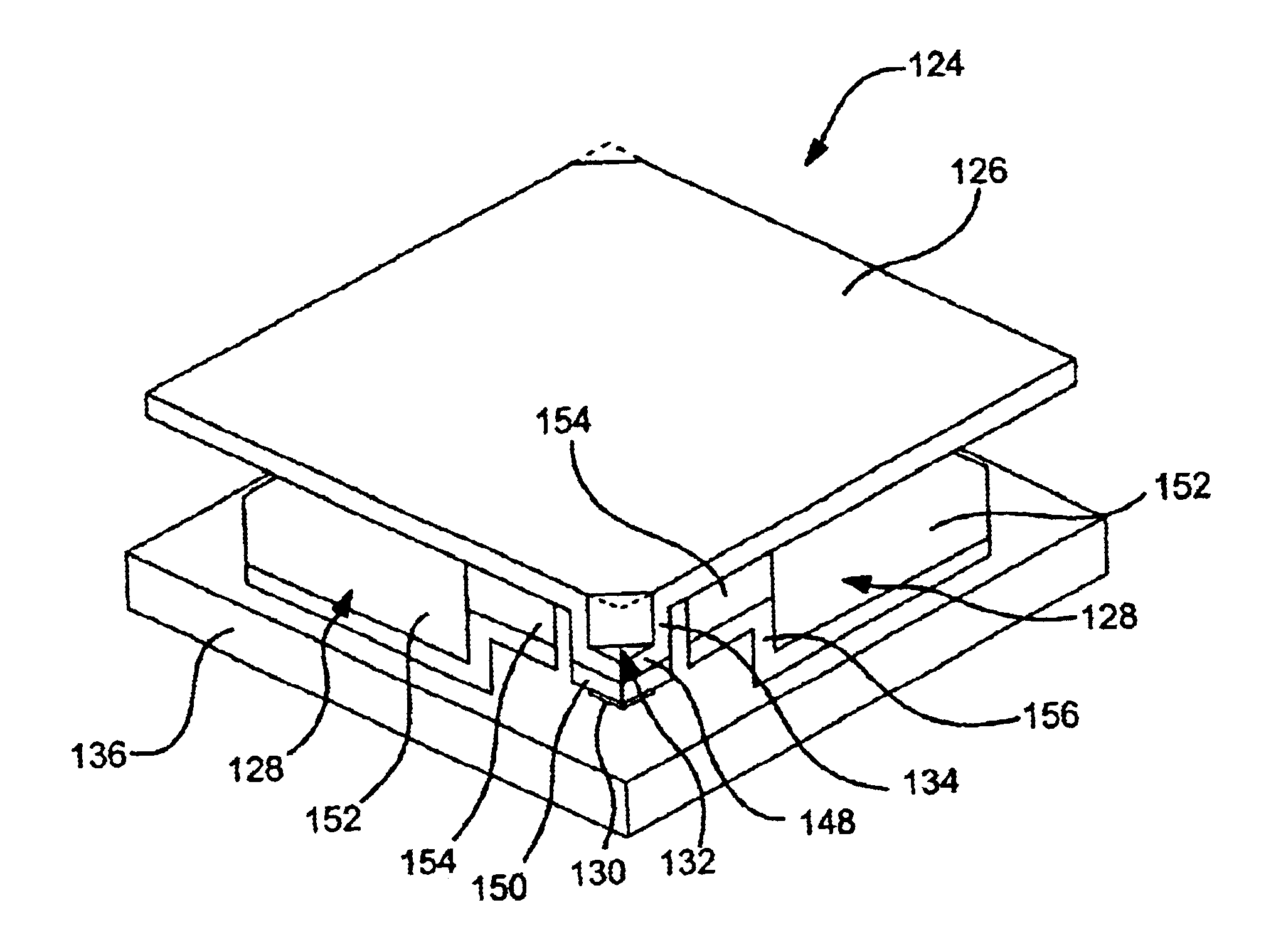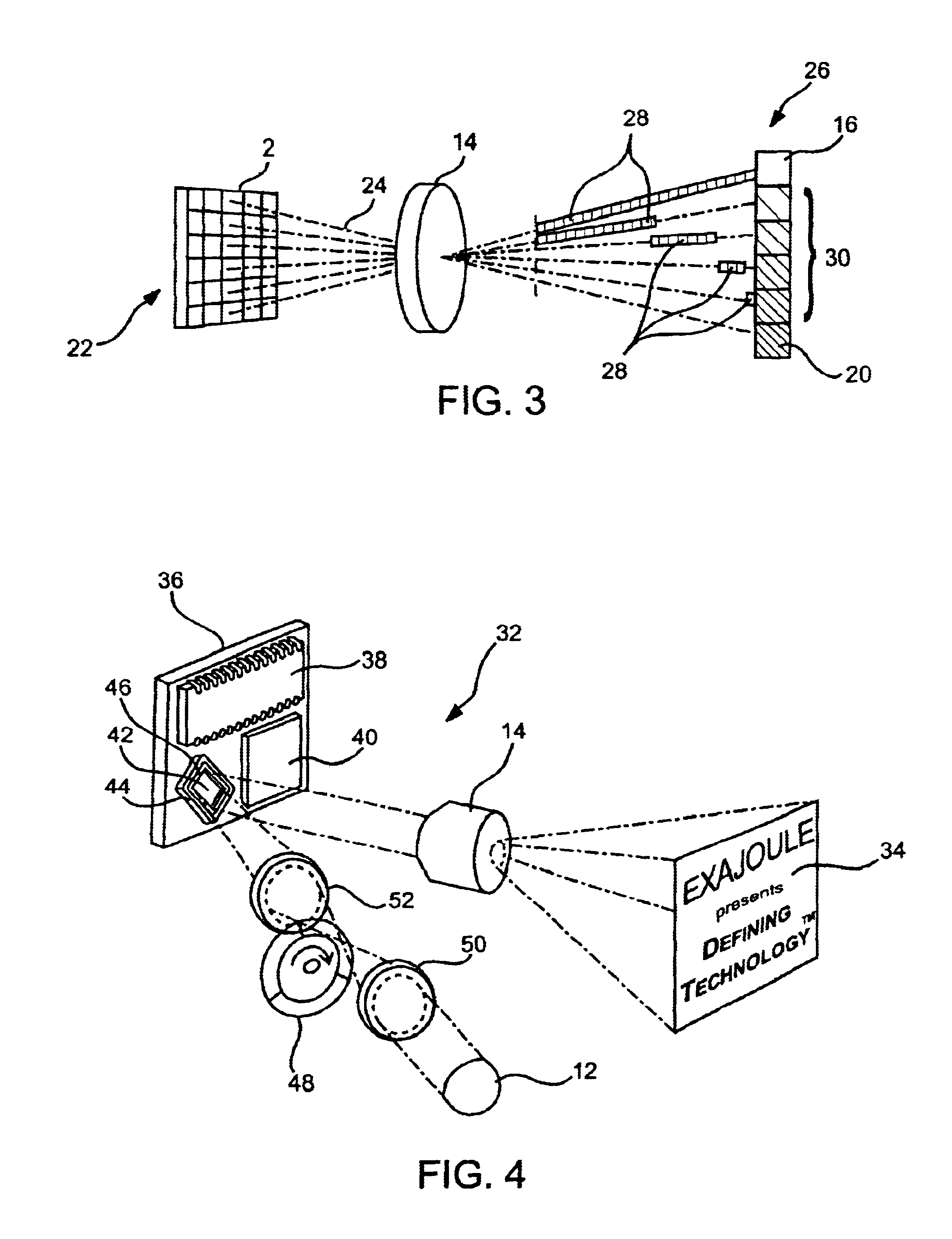Micromirror systems with side-supported mirrors and concealed flexure members
a technology of mirrors and micromirrors, applied in the field of spatial light modulators, can solve the problems of low contrast ratio, unsuitable for most image display applications, and very dim schlieren systems, and achieve the effect of maximizing the available reflective surface area
- Summary
- Abstract
- Description
- Claims
- Application Information
AI Technical Summary
Benefits of technology
Problems solved by technology
Method used
Image
Examples
Embodiment Construction
In describing the invention in greater detail than provided in the Summary above, applicable technology is first described. This discussion is followed by description of a known micromirror device and its manner of production. Then a variation of a micromirror device according to the present invention is disclosed, as well as a preferred manner of production. Next, comparative views of the known and inventive micromirror devices are described. Finally, additional optional aspects of the present invention are described, including various optional support, micromirror and electrode configurations.
Before the present invention is described in such detail, however, it is to be understood that this invention is not limited to particular variations set forth and may, of course, vary. Various changes may be made to the invention described and equivalents may be substituted without departing from the true spirit and scope of the invention. In addition, many modifications may be made to adapt...
PUM
 Login to View More
Login to View More Abstract
Description
Claims
Application Information
 Login to View More
Login to View More - R&D
- Intellectual Property
- Life Sciences
- Materials
- Tech Scout
- Unparalleled Data Quality
- Higher Quality Content
- 60% Fewer Hallucinations
Browse by: Latest US Patents, China's latest patents, Technical Efficacy Thesaurus, Application Domain, Technology Topic, Popular Technical Reports.
© 2025 PatSnap. All rights reserved.Legal|Privacy policy|Modern Slavery Act Transparency Statement|Sitemap|About US| Contact US: help@patsnap.com



